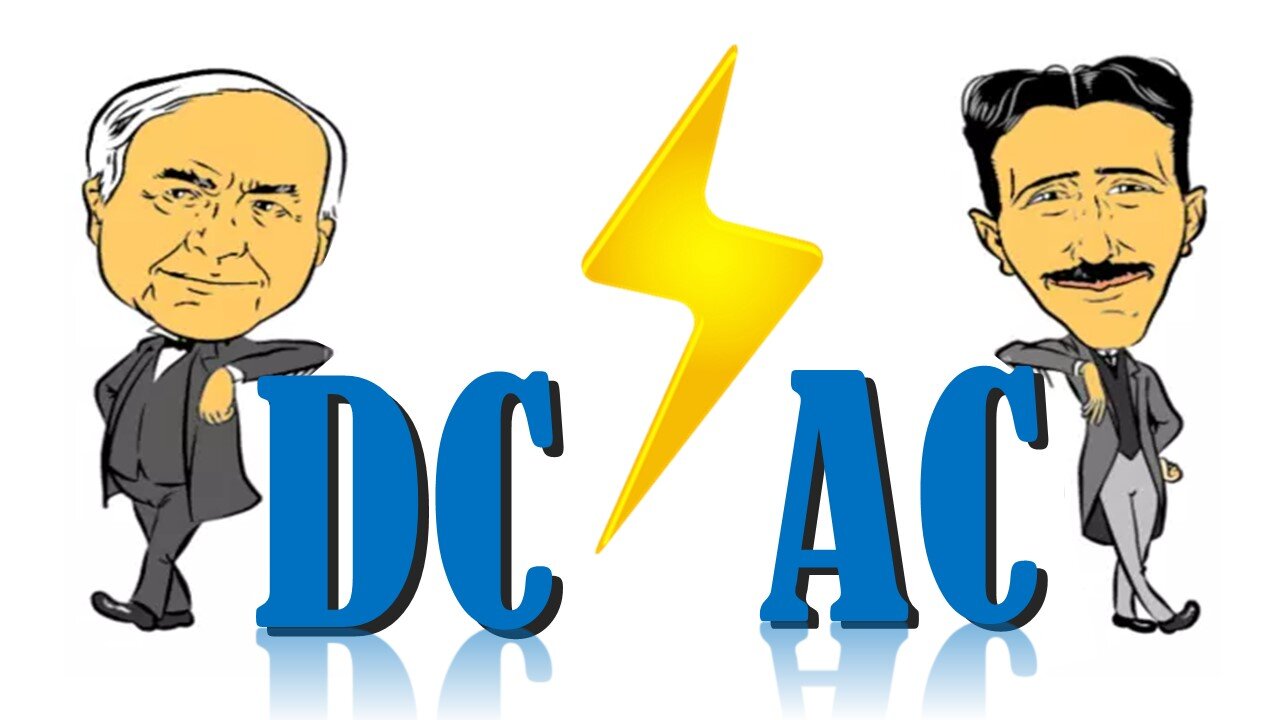Premium Only Content

What are AC and DC? Difference Between AC and DC Current Explained
Hi friends! In this video, I’m going to explain in detail the concepts of AC and DC to everyone new to learning electrical-electronic has to know. In this lesson, you will be able to find answers to many of your questions and you will have access to a lot of information about AC and DC concepts at the end of the lesson. First of all, where did the DC and AC concepts come from and discovered by whom? Let's start with that.
Thomas Edison, born in 1847, is known as the inventor of the light bulb and the direct current that he used to light the bulb. Direct current is used with the abbreviation “DC” which is the initials of direct current.
Nikola Tesla, born in 1856, is known as the inventor of alternating current. Alternating current is also used with the abbreviation AC.
Since the two inventors lived in almost the same period, DC/AC superiority struggles took place between Edison and Tesla. And this sweet scientific battle still continues today. The struggle for supremacy between Edison's Direct Current and Tesla's Alternating Current has divided people into two parts. While AC/DC struggles continue, let's look at what DC and AC are.
First of all, let’s look at how DC and AC are shown in the circuit. You can see the DC circuit symbols on the left and the AC circuit symbols on the right. AC and DC sources are commonly shown in these figures in circuit diagrams.
Well what are DC and AC measurements made with? You can see a multimeter on the left and an oscilloscope on the right. While DC measurements are usually made with a multimeter, oscilloscopes are used in AC measurements where we can see the shape of the signal on the screen.
When we measure the voltage value of DC power sources with a multimeter, we see a value whose direction does not change in time. For example, we can show the Voltage-Time graph of a 1.5V battery like this. We can show the Voltage-Time graph of a 9V battery as a constant 9V in this way. Therefore, we can say that DC is a current that does not change direction in time.
We discussed the concepts of AC and DC in this lesson and now we have come to the end. I hope it was helpful and you liked it. Hope to see you in the next lesson. Goodbye.
-
 6:26
6:26
Electrical Electronics Applications
2 years ago $0.04 earnedKirchhoff's Voltage Law (KVL) Explained
308 -
 LIVE
LIVE
Nick Freitas
1 hour agoLIVE at America Fest!
619 watching -

vivafrei
2 hours agoCandace Owens' Backtracks? Brown University Cover-Up? Bongino Leaves! Pfizer Makes LEGAL ADMISSIONS?
32.9K33 -
![[Ep 813] LIVE from Rumble Set at AmFest 2025 | Guests Vem, Midnight, & Kevin Smith](https://1a-1791.com/video/fwe2/31/s8/1/4/F/c/J/4FcJz.0kob-small-Ep-813-LIVE-from-Rumble-Set.jpg) 56:22
56:22
The Nunn Report - w/ Dan Nunn
2 hours ago[Ep 813] LIVE from Rumble Set at AmFest 2025 | Guests Vem, Midnight, & Kevin Smith
2.59K1 -
 29:58
29:58
Stephen Gardner
2 hours ago🔥IT'S BAD! NEW report just DROPPED!
3.78K9 -
 54:53
54:53
The Quartering
5 hours agoDan Bongino Quits, New Break In Tyler Robinson Case & Brown Shooting!
103K54 -
 2:12:49
2:12:49
Side Scrollers Podcast
5 hours agoTrans Surgeries For Kids CRIMINALIZED + Harassed Target Employee Speaks Out + More | Side Scrollers
69.8K16 -
 1:01:16
1:01:16
Timcast
4 hours agoTrump TROLLS Legacy Media, Announces WARRIOR DIVIDEND, Venezuela Fake Out
178K77 -
 1:04:30
1:04:30
Sean Unpaved
3 hours agoSeahawks Looking For REVENGE Against Rams! | UNPAVED
26.3K -
 46:32
46:32
The Amber May Show
6 hours ago $2.56 earnedLaw & Disorder: FBI Shakeups, Arrest Waves, and a Culture That’s Gone Off the Rails
26.4K2